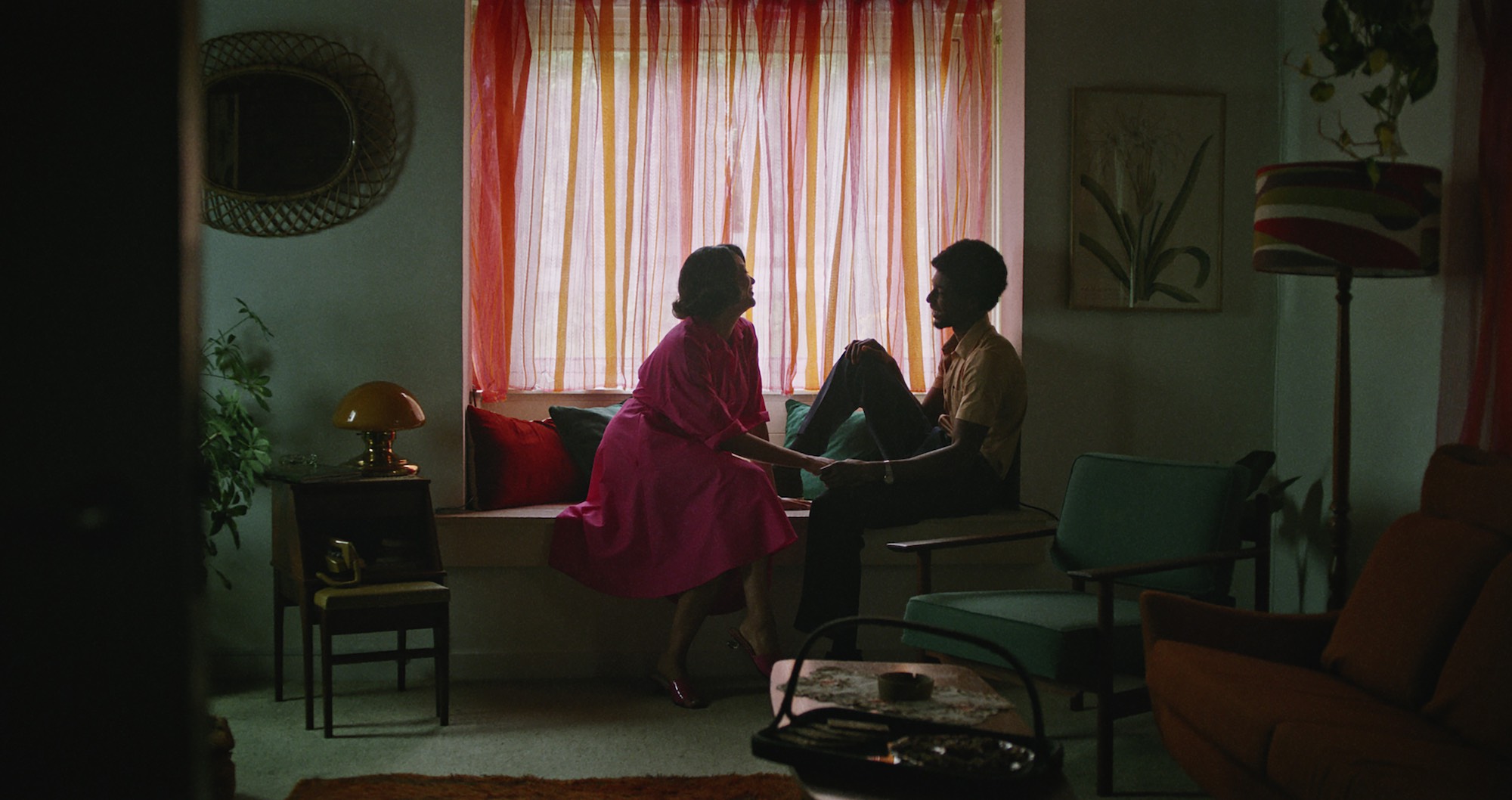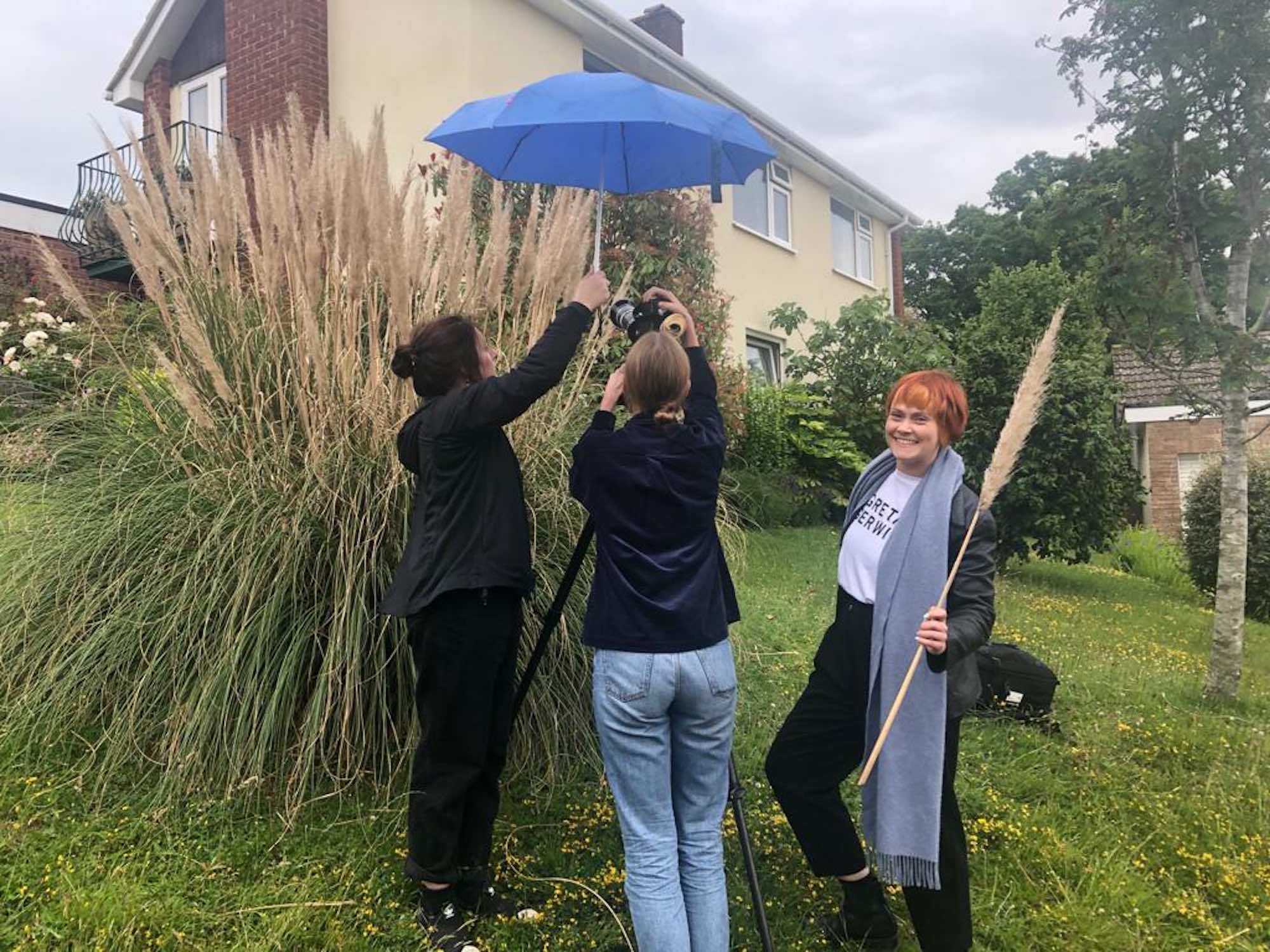
One aspect of documentary filmmaking, which Director Jessica Bishopp rightly points out in the following interview, is that it can be great medium to explore myths, to use formal ‘reenactment’ as a place for observing what so many know, but hold as taboo. Commissioned for Channel 4’s Random Acts, Bishopp’s hybrid documentary PAMPAS focuses on the myth of the pampas grass plant in an era when the owning of said plant was a signal of sexual desire. That amongst the traditional suburban homes of the 60s and 70s these plants were used as signals for swingers and the sexually adventurous. Bishopp has taken the story of this plant and created a document which creatively blends true story with fictional representation. DN caught up with Bishopp to talk about how she discovered this ‘myth’ and why a hybrid doc was the best format to tell its story.
How did you discover this ‘myth’ surrounding the pampas grass plant?
It was something I grew up with. I grew up in the area where the film is set, my grandparents’ old house is featured in the 16mm footage as there is a majestic pampas grass in the front garden – the voice of the woman who now owns the house is featured in the film. I lived on the border between Kent and Sussex, and the pampas grass myth is something that people just know, and this ‘knowing’ is why I wanted to explore it, how do myths become something everyone just ‘knows’? The myth resurfaced itself for me last year when my Dad mentioned it jokingly and I felt a need to explore it further through film – every film I make is because I’m curious about something and feel like the only way to explore it is through film. The idea of this public secret and subculture intrigued me, the concept of sexual signalling in suburbia, the idea that people who presented themselves in a conservative manner on the surface to their neighbours would go to great lengths to orchestrate swinging parties; hiding in plain sight.
At what point did you decide to tell this story as a film?
Not immediately… I like to mull ideas over. Making a short film is not easy, so I know that I have to find something in the story that I will be passionate about in several years time. I knew I wanted to make PAMPAS because it is a story that has many layers. On the surface it is fun, vibrant, gossipy and flirtatious, and I wanted to explore the concept of taking a myth as fact and exploring myth through documentary film. Then, underneath all this, I am inspired by the people who decided to make the decision to live alternatively within the environment of 70s suburbia that focused on the ideas of the nuclear family.
I wanted to explore the concept of taking a myth as fact and exploring myth through documentary film.
Let’s remember that there were mother and baby homes for ‘fallen women’ in the 60s and 70s where young unmarried women had their children in secret who were put up for adoption, with a total of 172 homes in the UK in 1968 when the number was at its peak. Also, the contraceptive pill was only introduced in the UK on the NHS in 1961 and this was for married women only, becoming available to all women in 1967. Women’s sexuality and desire was heavily controlled during the 60s and 70s, therefore non-monogamous relationships were dangerous and were in effect acts of rebellion. I like stories and films that have a small core idea featuring interesting people, that then have a wider impact and effect.

Could you explain the writing process and the decision to tell this story as a hybrid documentary?
I think the authentic voices of the women are important, I recorded these interviews myself, however all the women wanted to remain visually anonymous. Their voices and whispers bring the visuals alive. The film could be mistaken for a reenactment, however we are reenacting something that never happened. The story is instead brought alive by the women’s belief in the myth. The visuals are a reimagining of the myth; and all the dreams, fantasies and gossiping surrounding it.
I think hybrid documentaries are an incredibly powerful and an interesting medium to work in; occupying the space in-between. I love that documentary can be an experimental and creative medium, and that some stories, more than others, lend themselves to be told in a way that requires creative experimentation; the documentation of myth, imagination and belief being some of them.
The aesthetic of the house and the costumes are so convincing, could you talk about working with your production and costume designer on constructing the visuals?
This was my first time working with a production designer, the imaginative Anna Papa, and a costume designer, the talented Amy Thompson. Our process included a lot of back and forth, Amy sent me live updates whilst she was sourcing costumes in order to gauge what I was imagining, and then she still brought a further selection to set. We continued to make decisions and had discussions on the shoot day. It was an amazing experience, I realised when filming you can’t capture all the small details of the set and costumes on screen, but that doesn’t mean the details are not necessary, it makes them even more important. Production and costume design are all about the small details that help to create the context within which we all operate; the actors, the cinematographer, and me.



We need all the details to create the atmosphere and essence of the 70s, however we don’t necessarily need to physically show everything in the shot. It is about presence and setting the scene for the shoot, everyone on set needs to feel present in the 70s. As we had no sync sound we were able to have music playing throughout the shoot to help create mood; together lead actress Naomi, composer Hollie and I created a 60s/70s music playlist. Working with them also highlights how much a film is made by a crew, rather than an individual, even though directors get a lot of attention; PAMPAS was truly a collaborative team effort. The aesthetics are captured bewitchingly by Cinematographer Anna MacDonald.
A film is made by a crew, rather than an individual, even though directors get a lot of attention.
Why was it important for you to have exclusively female voices telling this story?
I am curious to see if people immediately notice that it is only female voices? I wanted to explore female desire through the audio and visuals. We only ever show Naomi’s face and body in full, the frame dissects and fragments all the other people to add context and texture to her story, it is visually all about Naomi and her journey. It was important for me to have exclusively female voices because I wanted to tell the story from a female perspective, and female desire from women’s perspective needs more screen time. I also wanted to have a film crew made up of all women in each of the heads of department roles; director, producer, cinematographer, editor, composer, production designer, costume designer, sound designer, and colourist. Considering diversity in front of and behind the camera are equally important.

How was the process of working with Random Acts?
They are very supportive and trusting. It is wonderful to have such an experimental, creative and daring commissioner. Channel 4 Random Acts is important as it supports artists and directors to work with a broadcaster. We need more commissioning opportunities like Channel 4 Random Acts!
What’s next for you?
My next short documentary project has just been awarded funding by the Doc Society and BFI which is exciting! I am also developing some longer film projects and a virtual reality project too. Always on the look-out for funding and commissioning opportunities and crew collaborations, like every director.


